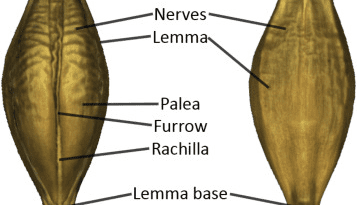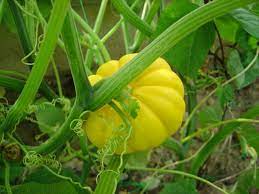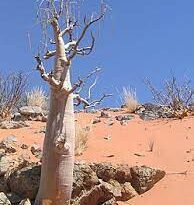The Maize/Corn Anthers: Economic Importance, Uses, and By-Products
One of the critical components of maize reproduction is the anther, which is part of the male reproductive organ known as the stamen. The anther is essential for pollen production, making it a focal point for understanding maize fertilization and crop yield.
Maize/Corn Anthers are elongated structures that typically measure between 3 to 5 millimeters in length. They are located on the tassel, the male inflorescence of the maize plant, which emerges from the top of the plant.
Each tassel contains numerous anthers, grouped in clusters known as spikelets. Within each spikelet, there are usually two florets, each containing three stamens. The positioning and abundance of anthers ensure efficient pollen dispersal, critical for successful fertilization.
The anther itself is composed of four lobes, each containing pollen sacs known as microsporangia. These microsporangia are responsible for the development and maturation of pollen grains. The process of pollen development, or microsporogenesis, begins with the formation of microspore mother cells within the microsporangia.
These cells undergo meiosis, a type of cell division that reduces the chromosome number by half, resulting in haploid microspores. Each microspore then undergoes mitosis to form a pollen grain, which is the male gametophyte.
Pollen grains in maize are typically spherical and have a tough outer wall called the exine, which protects the genetic material during transport from the anther to the female reproductive organs. The inner layer, known as the intine, is more delicate and helps in the germination process once the pollen lands on a compatible stigma.
The release of pollen from the anther is a critical event in the reproductive cycle of maize. This process, known as dehiscence, occurs when the anther walls split open, allowing the pollen to be dispersed by wind. Maize is primarily wind-pollinated, relying on air currents to carry the pollen from the tassel to the silks of the female inflorescence, or ear. Each silk corresponds to a potential kernel on the ear, and successful pollination of each silk is essential for full kernel development.
Environmental factors such as temperature, humidity, and wind speed can significantly influence the timing and efficiency of anther dehiscence and pollen dispersal. High temperatures or drought conditions can impair anther development and pollen viability, leading to reduced fertilization rates and lower crop yields. Conversely, optimal conditions can enhance pollen viability and increase the likelihood of successful fertilization.
In summary, maize anthers are crucial for the plant’s reproductive success and subsequent grain production. Their structure and function are finely tuned to ensure efficient pollen production and dispersal, largely relying on environmental factors to achieve successful fertilization.
Understanding the biology of maize anthers not only sheds light on the plant’s reproductive mechanisms but also provides insights into improving crop yields and resilience in varying climatic conditions.
The Economic Importance and Uses of Maize/Corn Anthers

1. Pollen Production: Maize anthers play a crucial role in producing pollen, which is essential for fertilization in maize plants.
2. Crop Yield: Efficient anther function contributes to higher crop yields by ensuring successful pollination and subsequent kernel development.
3. Hybrid Seed Production: Maize anthers are used in hybrid seed production to create new varieties with desirable traits such as disease resistance or increased yield potential.
4. Genetic Research: Anthers are valuable resources for genetic research, allowing scientists to study traits related to pollen development and fertility.
5. Plant Breeding: Maize anthers are utilized in plant breeding programs to develop improved varieties with traits such as drought tolerance, pest resistance, or enhanced nutritional content.
6. Biotechnology: Anthers can be used in biotechnological applications, including genetic engineering for trait improvement or pharmaceutical production.
7. Agriculture: Maize anthers contribute to the agricultural sector by supporting maize production, which serves as a staple food and feed crop worldwide.
8. Food Industry: Maize anthers indirectly benefit the food industry by ensuring the availability of maize grains for various food products such as cornmeal, cornflakes, and corn syrup.
9. Livestock Feed: Maize anthers are used as a component of livestock feed, providing essential nutrients for animals such as cattle, poultry, and swine.
10. Ethanol Production: Maize anthers can be utilized in ethanol production, as maize grains are a common feedstock for biofuel production.
11. Pharmaceutical Industry: Maize anthers may have potential pharmaceutical applications, including the extraction of bioactive compounds or the production of medicinal products.
12. Textile Industry: Maize anthers can be used in the textile industry for the production of bio-based fibers or materials.
13. Cosmetic Industry: Extracts derived from maize anthers may find applications in the cosmetic industry for skincare or haircare products.
14. Paper Industry: Maize anthers can be utilized in the papermaking process to produce paper products or packaging materials.
15. Environmental Remediation: Maize anthers may play a role in environmental remediation efforts, such as phytoremediation, by assisting in the removal of pollutants from soil or water.
16. Soil Health: Maize anthers contribute to soil health by supporting crop rotation practices and organic matter decomposition.
17. Cultural and Traditional Uses: Maize anthers hold cultural significance in many societies and may be used in traditional ceremonies or rituals.
18. Economic Stability: The cultivation and utilization of maize anthers contribute to economic stability by providing employment opportunities and supporting rural livelihoods in maize-growing regions.
Read Also: Hypoallergenic Cat Breeds Description and Complete Care Guide
The Products and By-products That Can Be Derived From Maize/Corn Anthers

1. Pollen: The primary product derived from maize anthers is pollen, which serves as the male gametophyte for fertilization.
2. Pollen Extracts: Extracts derived from maize pollen may have applications in pharmaceuticals, cosmetics, or nutritional supplements.
3. Hybrid Seeds: Maize anthers are used in hybrid seed production to create new maize varieties with desirable traits.
4. Genetic Material: Maize anthers provide genetic material for research purposes, including genetic engineering and breeding programs.
5. Biofuel Feedstock: Maize anthers contribute to biofuel production by providing feedstock for ethanol production.
6. Animal Feed: Maize anthers can be utilized as a component of animal feed for livestock such as cattle, poultry, and swine.
7. Biodegradable Materials: Maize anthers may be used in the production of biodegradable plastics or packaging materials.
8. Nutritional Supplements: Pollen extracts derived from maize anthers may be used as nutritional supplements due to their high protein and nutrient content.
9. Medicinal Products: Extracts from maize anthers may have potential medicinal applications, including anti-inflammatory or antioxidant properties.
10. Textile Fibers: Maize anthers can be processed to produce bio-based fibers for textiles or materials.
11. Paper Products: Maize anthers may be used in the papermaking process to produce paper products or packaging materials.
12. Bio-based Chemicals: Maize anthers can be utilized in the production of bio-based chemicals such as ethanol or organic acids.
13. Soil Amendments: Maize anthers may be composted and used as soil amendments to improve soil structure and fertility.
14. Fertilizers: Composted maize anthers can serve as organic fertilizers, providing essential nutrients for plant growth.
15. Animal Bedding: Maize anthers can be used as animal bedding material for livestock such as poultry or small mammals.
16. Green Energy: Maize anthers contribute to the production of green energy through biofuel production and biogas generation.
17. Cultural and Traditional Crafts: Maize anthers may be used in cultural or traditional crafts, such as decorative items or artwork.
Read Also Best Feeds for Young and Adult Ruminant Animals
Frequently Asked Questions (FAQ’s) About Maize/Corn Anthers

1. What is the primary function of maize anthers?
Maize anthers primarily produce pollen, which is essential for fertilization in maize plants.
2. How are maize anthers used in hybrid seed production?
Maize anthers are used to pollinate female maize plants, resulting in the production of hybrid seeds with desired traits.
3. Can maize anthers be used in genetic research?
Yes, maize anthers provide valuable genetic material for studying traits related to pollen development and fertility.
4. Are maize anthers edible?
While maize grains are commonly consumed, maize anthers themselves are not typically consumed as food.
5. What environmental benefits do maize anthers provide?
Maize anthers contribute to soil health through crop rotation practices and organic matter decomposition.
6. Are there any industrial applications of maize anthers?
Yes, maize anthers have various industrial applications, including biofuel production, pharmaceuticals, and textile manufacturing.
7. How do maize anthers contribute to agricultural sustainability?
Maize anthers support sustainable agriculture by enhancing crop yields, improving soil health, and providing economic opportunities for farmers.
8. Can maize anthers be used in alternative energy production?
Yes, maize anthers contribute to alternative energy production through biofuel production and biogas generation.
9. What role do maize anthers play in cultural traditions?
Maize anthers hold cultural significance in many societies and may be used in traditional ceremonies or rituals.
10. Are there any emerging technologies utilizing maize anthers?
Emerging technologies may utilize maize anthers in biotechnological applications, such as genetic engineering or pharmaceutical production.
Read Also: Nightshade Plants: A Comprehensive Guide









